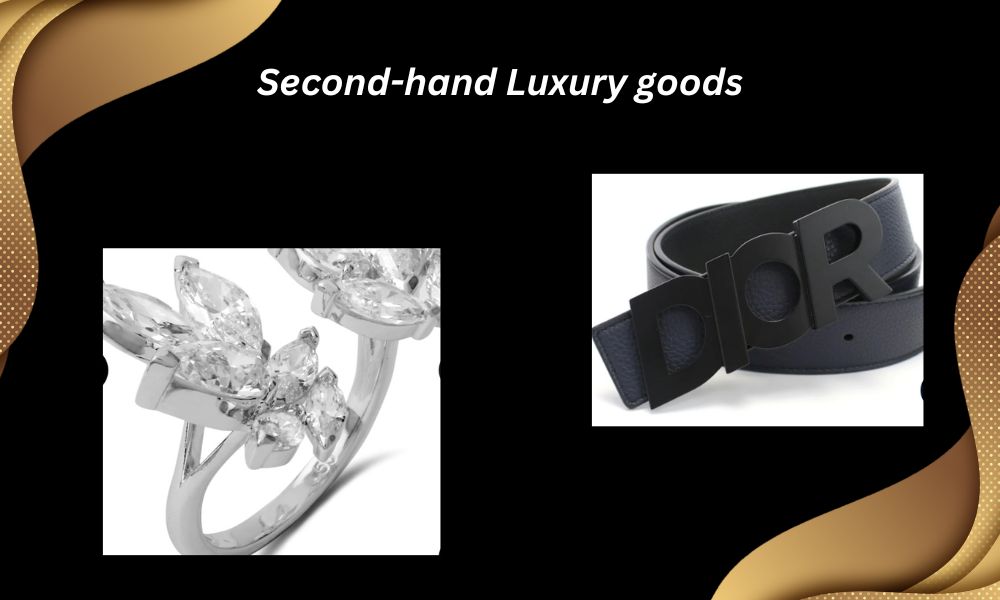Experts say the second-hand luxury goods market has the potential to become a large industry going into the future.
Data presented by the Statista shows that net sales of second-hand luxury goods from online websites have gone up by 82 percent while net sales from retail stores have slightly gone down by 15 percent in India. This point to an increasing penetration of the second-hand market in India, especially when it comes to the sale of luxury goods.Mr. Sunil, owner of Laludas Luxury Shoe-maker shop in Brigade Road said, “Demand for our shoes has increased by almost 30 percent since COVID-19. It is because we provide our customers with shoes of every luxury brand. And, if we do not have shoes of a particular brand we customize those shoes for our customers.” He added that it is easier to reach out to customers through the website, than selling shoes at a retail shop. Out of total revenue, 60 percent comes from the website of the shop. He also mentioned that prices at which shoes are sold in the shop are highly discounted. This led to 60 percent increase in the customer traction and 45 percent increase in net sales from last financial year 2021.
Garima Shah, a regular customer who prefers second-hand luxury goods said, “When there is an option to buy a same luxury product at cheaper prices then why should one abstain from buying second-hand luxury products?” She said that she bought a Louis Vuitton hand bag last month from Luxepolis-a start-up for pre-owned luxury products- for Rs. 25,000. When compared to the price of a first -hand luxury bag of the same brand which costs around Rs 1,25,000, she told that the bag was as new as the first-hand Louis Vuitton bag.
The market for second-hand luxury goods in India has reached the value of $555 million in 2022 showing a jump of 65 percent from 2017 to 2022. The current rate of growth of the market is 12.8 percent.
Manager at Galleria di Lux, a store of second-hand luxury goods in Indiranagar, said, “It has been almost 15 years since the beginning of the store. Over the years, we have established a strong network with authorized distributors of luxury brands. Every product in our store is genuine and authentic. These are the reasons we have never incurred loss for almost the last six years. We provide our customers verified second-hand luxury products at unbeatable prices.” She added that since the launch of her website the demand for the products has gone up by almost 70 percent. “Online boom and internet penetration has increased our customer base. It has also facilitated our deals with many other brand dealers,” she said.
However, she emphasised on the fact that consumers are buying more from the website than from a physical store. The net sales from the store have declined by 25 percent from the last year but net sales from the website and Instagram have increased by 33 percent. She credited the increase in demand for online stores to the young population, who prefer accessibility.
A report by the Business Insights shows that COVID-19 has declined the demand and supply of second-hand luxury goods market, including fashion accessories. However, it showed rise in online purchases during the pandemic. This indicates the positive growth of the market going into the future. It forecasted that the e-commerce industry will facilitate the growth of the second-hand luxury goods in near future.
However, online e-commerce giants have refrained from entering the second hand market. Chirag Shah, South Region Marketing head of Amazon, said that since Foreign Direct Investment (FDI) policies of the government are not clear on second-hand luxury goods, we do not sell much second-hand luxury goods on our platform.
Second-hand luxury items are goods which have been purchased by a second or subsequent customer. These goods include antique furniture, art jewellery, footwear, apparel and fashion accessories such as handbags, and watches among others. Latest trends in the market show that the re-sell of the luxury goods can create opportunities for a sustainable business model.
Divya Mishra, professor of macroeconomics, Sophia Girls College, Ajmer said, “Second-hand luxury goods have become a new trend in the country. The demand for second-hand luxury goods is highly elastic unlike luxury goods. These products are sold at lesser and affordable prices than first hand luxury goods, therefore their demand are highly elastic because when prices of these second-hand luxury goods go down their demand automatically go up.” She added that shift in consumer preferences and increase in digitisation and social media have increased the demand for the second-hand luxury goods.
Anubhuti Jain, a regular customer who bought heels of Jimmy Choo brand during Diwali, said that this is the first time she bought heels of some luxury brand because of the presence of second-hand luxury goods in the market. She bought it for Rs 20,000 against the original price of Rs 44,156. “I got heels at half of the original price, I was so happy because it was my first luxury shopping experience,” she added.
AnvitaMehra, founder and Chief Executive Officer (CEO) of Confidential Couture said in an interview to the Business line that when she started in 2014, the market place for pre-owned luxury products was not developed. She said that the investors see growth in this sector because they fulfil the needs of aspiring buyers like college students.
Saianand Rajaram, business analyst at Cognizant said that the demand of second-hand luxury goods has increased because the present generation has become more conscious in adopting more sustainable fashion styles. Also, second-hand goods are perfect product fit for the market. These products can easily enlarge the customer base for any business house. Furthermore, the pricing model of business houses is unbeatable. The great reliance on web network by these business houses to reach large customers has increased the market size of second-hand luxury goods.




